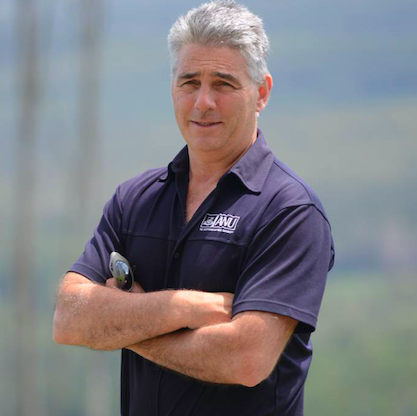A Collaborative Project
The Bushfire Recovery Project is a collaboration between The Fenner School of Environment and Society, The Australian National University, Griffith Climate Change Response Program, Griffith University, 2020 and the Great Eastern Ranges Initiative.
The cross-tenure effort brings together Australia's pre-eminent researchers with nodes of community volunteers in the Great Eastern Ranges and Gondwana Link landscapes who assist with the collection of critical data. Information gathered by these citizen scientists and other field ecologists is then analysed by Griffith and ANU scientists and fed back to practitioners and decision-makers to assist with the development and implementation of post-fire forest policies, plans and management.
The cross-tenure effort brings together Australia's pre-eminent researchers with nodes of community volunteers in the Great Eastern Ranges and Gondwana Link landscapes who assist with the collection of critical data. Information gathered by these citizen scientists and other field ecologists is then analysed by Griffith and ANU scientists and fed back to practitioners and decision-makers to assist with the development and implementation of post-fire forest policies, plans and management.
Professor BrendAn Mackey
|
Prof Brendan Mackey is Director of the Climate Action Beacon at Griffith University, Queensland. Brendan has a PhD in plant ecology from The Australian National University. He is currently a Coordinating Lead Author in Working Group II of the IPCC 6th Assessment Report and has published extensively in the fields of climate change adaptation and mitigation, biodiversity, land use, connectivity conservation and sustainable development.
|
Professor David Lindenmayer AO
|
Professor David Lindenmayer is a world-leading expert in forest ecology and resource management, conservation science, and biodiversity conservation. He currently runs 6 large-scale, long-term research programs in south-eastern Australia, primarily associated with developing ways to conserve biodiversity in farmland, wood production forests, plantations, and reserves. He has maintained some of the largest, long-term research programs in Australia, with some exceeding 37 years in duration.
David Lindenmayer has published 1255 scientific articles including 798 peer-reviewed papers in international scientific journals. He has also published 45 books, including many award winning textbooks and other seminal books. He is among the world's most productive and most highly-cited scientists, particularly in forest ecology and conservation biology. David Lindenmayer held a prestigious Australian Research Council Laureate Fellow from 2013-2018. He is a Fellow of the Australian Academy of Science (elected 2008), a Fellow of the Ecological Society of America (elected in 2019), and was appointed an Officer of the Order of Australia (AO) in 2014. His research has been recognised through numerous awards, including the Eureka Science Prize (twice), Whitley Award (10 times), the Serventy Medal for Ornithology, and the Australian Natural History Medallion. In 2018, he was awarded the prestigious Whittaker Medal from the Ecological Society of America. |
Dr Susan Gould
|
Dr Susan Gould is a Senior Research Fellow at the Griffith Climate Change Response Program. Sue has had a long term interest in ecological restoration and biodiversity conservation. For many years Sue lived on Cape York Peninsula where she worked in community based natural resource management. Sue’s doctoral research addressed the question “Does post-mining rehabilitation on the Weipa bauxite plateau restore bird habitat values?” She worked as an ecologist on the NERP funded Landscapes and Policy Hub ground-truthing remote sensing data to identify potential climate change refugia. She has published on post-mining rehabilitation and ecological modelling. Sue is also a keen bird watcher and nature sound recordist.
|
Dr Patrick Norman
|
Dr Patrick Norman is a research scientist for the Griffith Climate Change Response Program at Griffith University, Australia. He specialises in assessing human impacts to the environment, particularly through remote sensing and volunteered geographic information. He was employed in natural area management by the Queensland Government, prior to undertaking his doctoral research, which focused on assessing people’s movements through national parks to identify areas likely to suffer environmental damage. His research is now focused on assessing broadscale impacts to forest, including from fire.
|
Dr Chris Taylor
|
Dr Chris Taylor is a Research Fellow at the Fenner School of Environment and Society, Australian National University. Chris specialises in spatial analysis of forest ecosystems and disturbance regimes, remote sensing, environmental modelling, land use and Forest certification. He has been involved with a number of research projects, ranging from the analysis of fire severity patterns across Australian forests through to climate change adaptation in Australian agriculture. Chris is also a passionate landscape photographer and has held a number of exhibitions of his photography.
|







